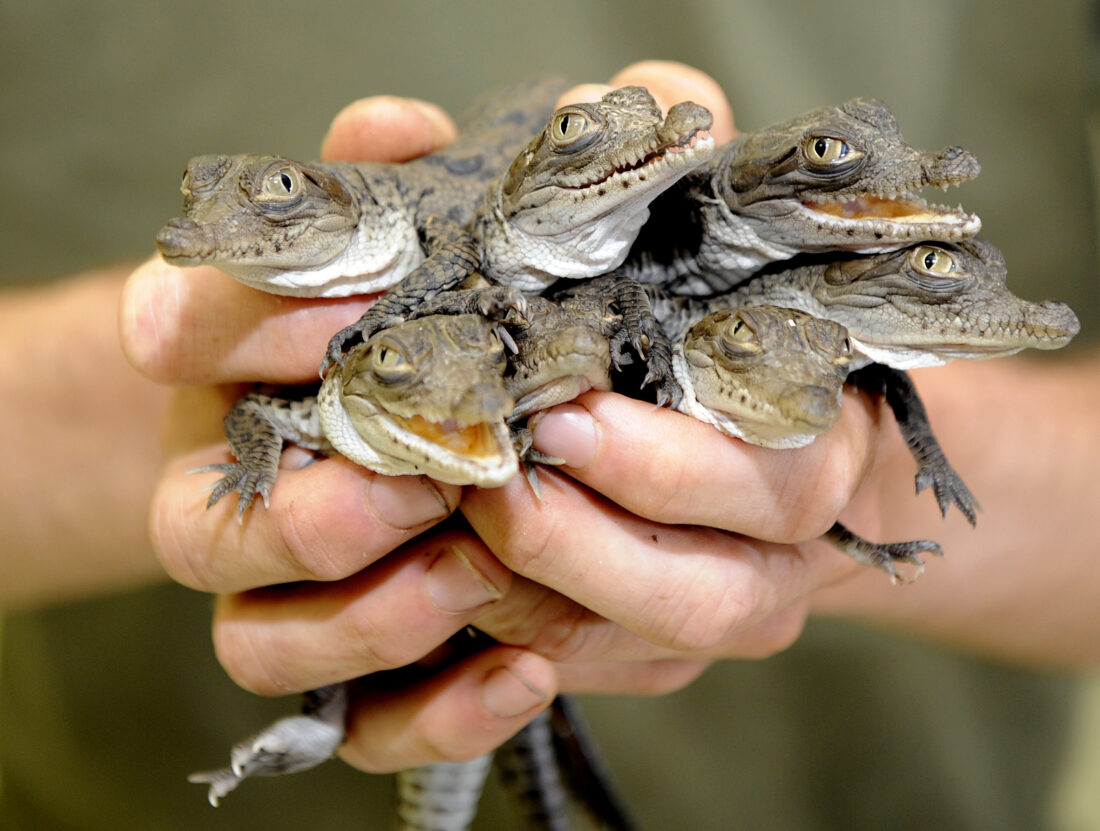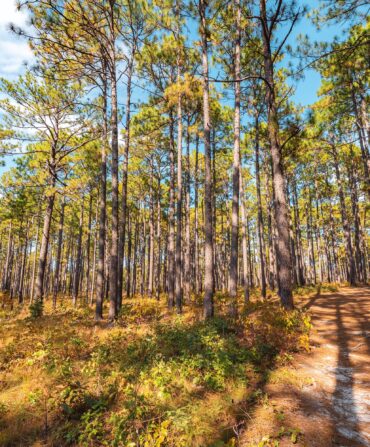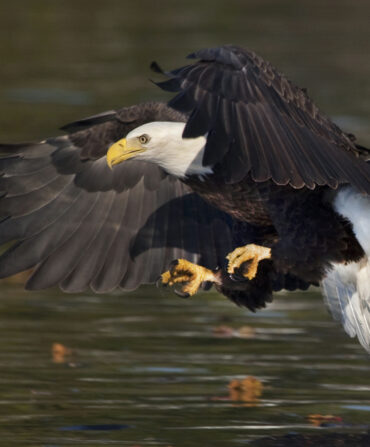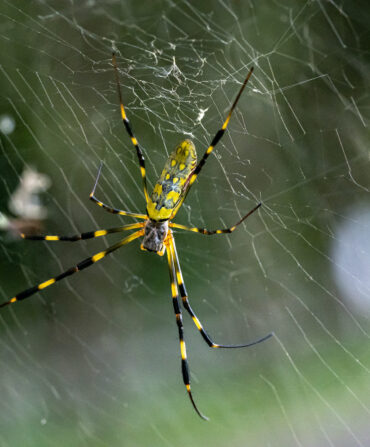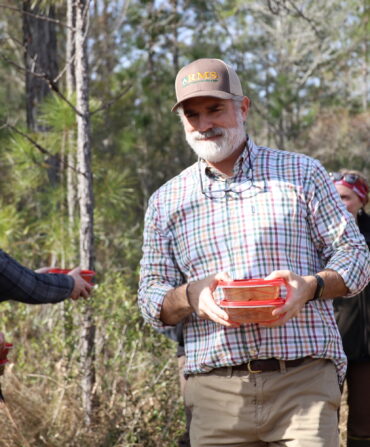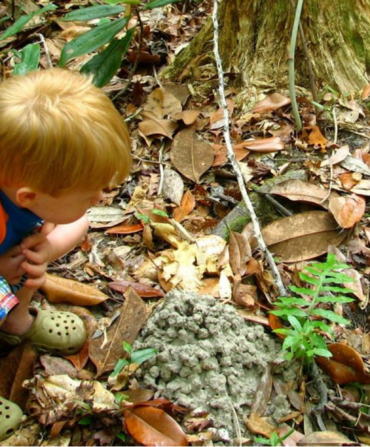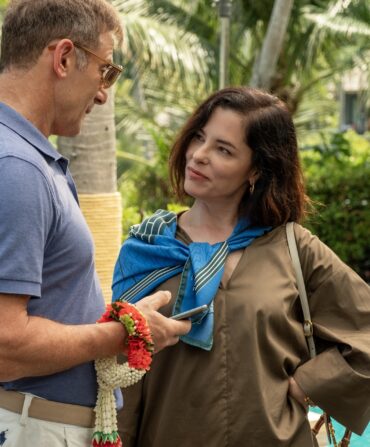It’s a hot July night, and Mike Lloret and his crew are racing through the dark on an airboat. Miami’s high-rises offer but a distant, faint night-light, and Lloret wears a headlamp to illuminate his surroundings—a canal stretching straight as a runway with buttonwoods clinging to its high, muddy banks. Forty yards ahead, in a flash, he spots a pair of red eyes spaced no farther than an inch apart. He whips the boat starboard and cuts the noisy engine at just the right moment. A crewmate hanging from the bow reaches into the water and scoops up a hatchling crocodile.

Lloret is a wildlife biologist and the principal environmental specialist at Florida Power & Light Company (FPL)’s Turkey Point Nuclear Plant—an unlikely spot, perhaps, for the comeback of the croc.
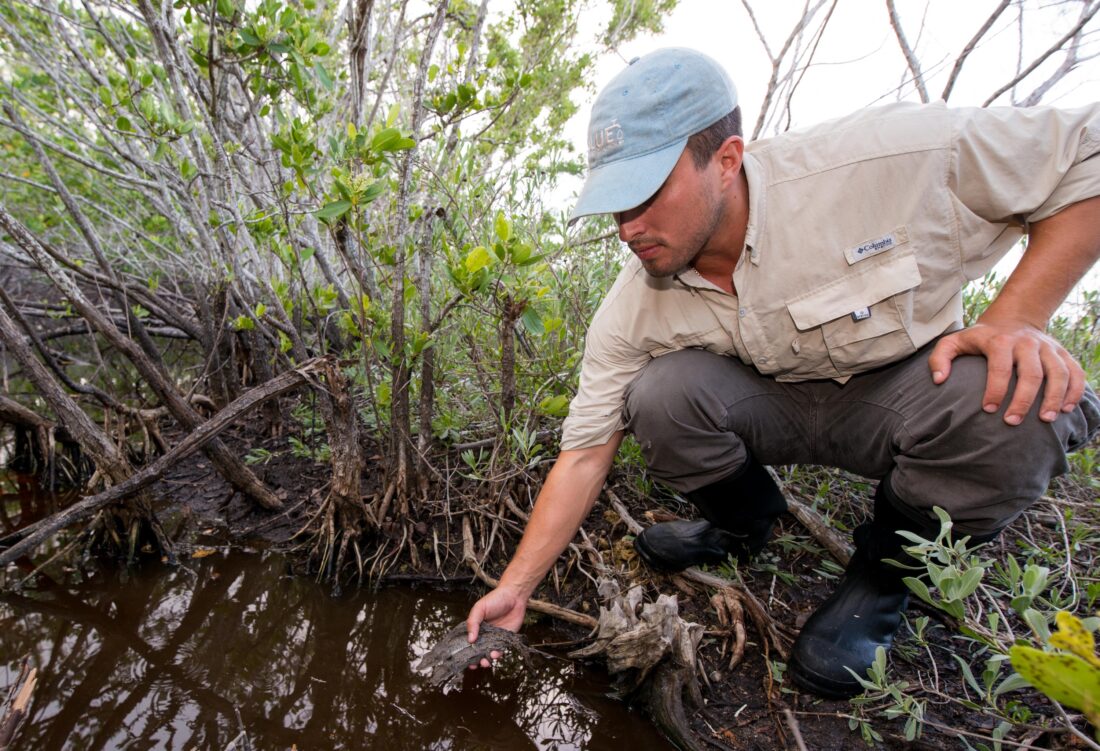
Turkey Point lies beyond civilized Miami, if there is such a thing. Twenty-five miles south of the city and as far east of Homestead as you can get without splashing into Biscayne Bay, its engineers oversee the radioactive work of splitting uranium atoms to generate power for nearly a million South Florida homes. These reactors went live in 1972 and 1973 to facilitate the area’s booming population—the 1970 U.S. census recorded a 35 percent bump to Miami’s head count. That year, The New York Times reported, “Among the likely benefits of Florida’s population increase will be the addition of two more United States Representatives—bringing the total to 14—and more Federal judges and liquor licenses.”
The American crocodiles, however, were losing out. The same habitat they favor was being gobbled up by sunseekers: isolated coves, mangrove swamps, and brackish intracoastal waterways. “Places they used to nest, like Miami Beach, were lost to development,” says Frank Mazzotti, a wildlife biologist, University of Florida professor, and the head of UF’s Croc Docs research team. Though the crocodile’s historic range in America hugged the coast from Palm Bay on the Atlantic side to Clearwater on the Gulf, by the mid-seventies, the last two hundred individuals of the species had been squeezed into the Keys and southern Biscayne Bay, earning them a spot on the 1975 U.S. Endangered Species List.
At the time, Florida’s better-known reptile, the American alligator, was recovering from its own population crash, mostly due to hunting. Florida, notably, is the only place in the world where alligator and crocodile habitat overlaps. But don’t confuse the two species. Crocodiles have longer, thinner snouts, and males can grow up to twenty feet long. They live in salt and brackish water, thanks to salt-excreting glands in their tongues. And compared to alligators and their global crocodilian cousins, American crocs are a shy bunch. While the Florida Fish and Wildlife Conservation Commission (FWC) has logged 487 unprovoked alligator attacks on humans since 1948, crocodiles have been implicated in just two—one of which involved a man swimming in crocodile-infested waters at 3:00 a.m.
Crocs on the Brink
Back in the era of disco, cocaine cowboys, and Dallas, however, there were no crocodile-infested waters in Florida. In the late seventies, UF’s Mazzotti started his doctoral dissertation on the American crocodile. Over the course of four years, searching South Florida’s waterways three or four nights a week, he caught just thirty-one non-hatchling crocodiles.
But hope lurked in the shadows of the Turkey Point nuclear power plant—that towering symbol of modernity, built to air-condition the homes that had led to the crocodiles’ demise. In 1978, a staffer there stumbled upon a clutch of eggs. As it turned out, the 168 linear miles of cooling canals Turkey Point relied on to condense steam and produce energy also provided an ideal habitat for crocodiles: High berms allowed females to safely deposit eggs; the isolation protected them from pesky humans; and plenty of fish and fowl flourished in the waterways to sustain a growing population. (“A crocodile will fight you for a blue crab,” says Mazzotti, noting crocodiles aren’t the large-mammal-munching apex predators we might imagine them to be.)
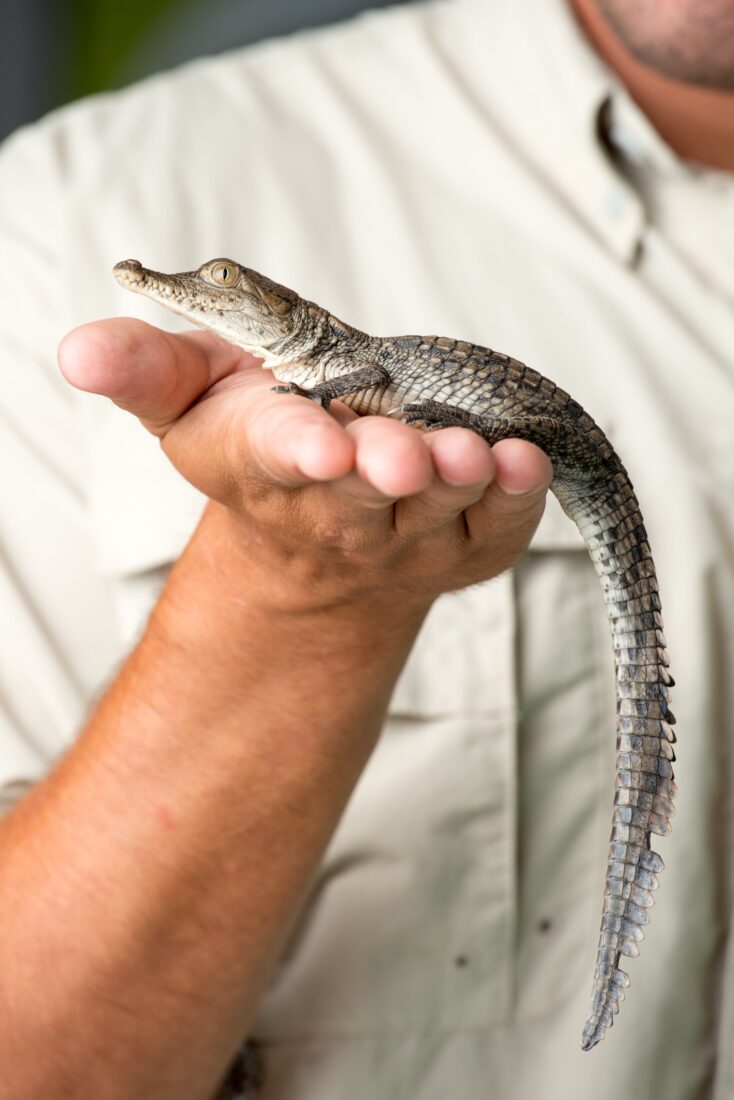
Over time, FPL committed to making its canals and pristine mangroves even more hospitable to crocodiles. Workers, for example, remove invasive flora from berms, and use amphibious backhoes to dig small ponds on them, fresh water the hatchlings require for the three months it takes for them to develop salt glands. In dry spells, Turkey Point can pump fresh water into the canal system to maintain the crocodiles’ ideal salinity. “In other areas, it’s extremely difficult to accomplish what we have,” says Lloret, who joined the Turkey Point team in 2017. “We own the land. We have the ability to modify the land. We have a good grasp on what crocodiles like and need, and we have resources.”
Since that first crocodile nest sighting in 1978, biologists have tagged more than ten thousand hatchings at Turkey Point, whose canal system now hosts the highest density of crocodiles in North America. In 2007, the species was downlisted from endangered to threatened, and this year’s hatchling count holds more promising news.
Make Way for Hatchlings
Each spring, Lloret stalks Turkey Point’s berms in search of crocodile nests, which hold an average of thirty to sixty eggs. After a three-month incubation, baby crocodiles start to vocalize from inside their shells when ready to hatch. (Lloret describes the sound as a pip, but online commenters think the pitch is more intergalactic laser beam.) At the sound, the mama crocodile digs up her nest. She might gently crack a shell to help speed a little one’s emergence. Then the sharp-toothed predator scoops up the newborns in her mouth and delivers them, ideally, to fresh water.
From around June 25 to August 15, Lloret and his crew scour the canals two nights a week in waders, safety glasses, and noise-canceling earmuffs. His men are Turkey Point landscapers, foremen, and mechanics who sign on for the thrilling, mosquito-plagued seasonal work. “I can teach anyone how to catch a crocodile,” Lloret says. Together, the group looks for mud indentions from where mothers slide from land to water. They spot eggshell fragments bobbing in mangrove roots. They climb berms to look for babies swimming in ponds. They ignore the green glowing eyes of a thousand crabs and spiders. “The really exciting part is seeing little beady red eyes looking back at you,” says Lloret, who strives to capture crocodiles within twenty-four hours of hatching. “We’re blinding them with our headlamps. It’s like an alien abduction.”
The men place the crocodiles, each then ten to twelve inches long, into mesh bags and deliver them to an on-site lab for weighing and measuring. Lloret inserts a tiny microchip into their tails and cuts a distinct pattern into their scutes for future identification. The hatchlings then spend a few days plumping up in tubs of fresh water before returning to their wild, man-made habitat.
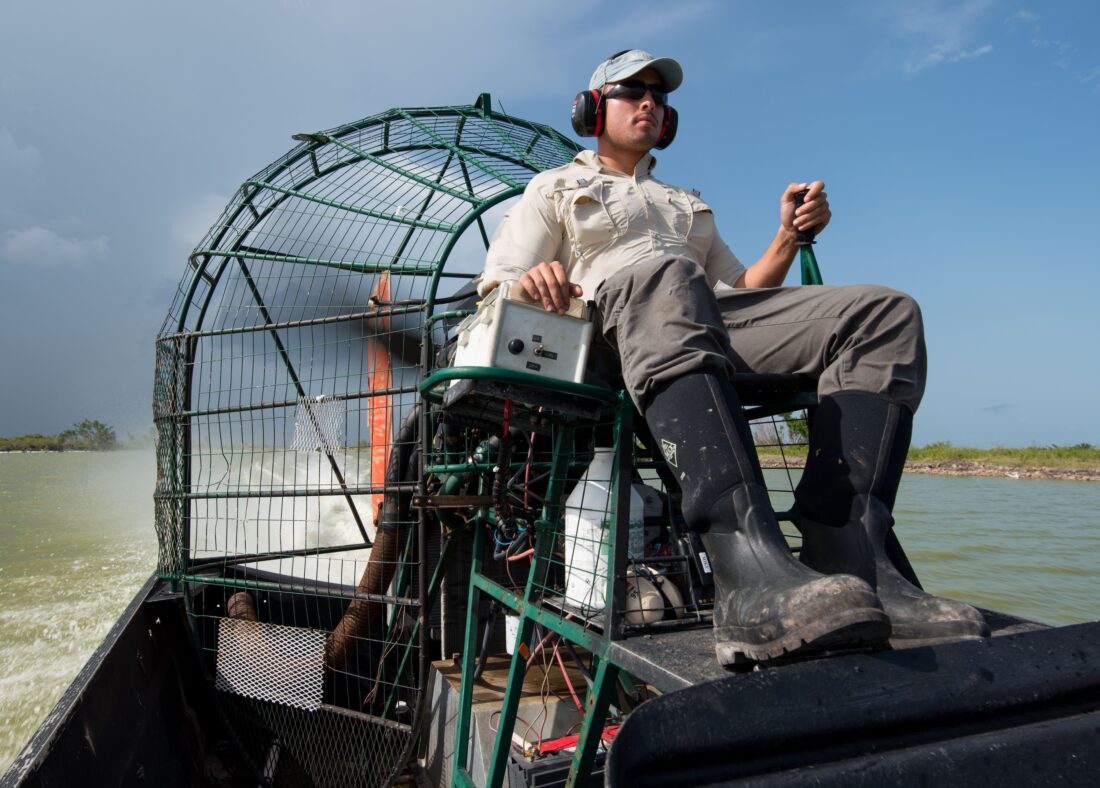
The team had to do a lot of this in 2025: It’s been a historic season for crocodile hatchlings, Lloret says. His group collected 606 tiny crocodiles from an estimated thirty nests—the first time in the program’s forty-seven years that Turkey Point surpassed 600 hatchlings. “Lovingly, we’re calling it the 600 Club,” he says. “Everyone is excited.”
Lloret’s numbers support a positive overall trend for crocodiles in South Florida. This year, Mazzotti’s Croc Docs team, which monitors hatchlings outside of Turkey Point, located 178 nests, including one on Sanibel Island and four by the Marco Island Executive Airport. They found the majority of their nests, however, near Flamingo in the southern reaches of Everglades National Park. In 1986, biologists found a single nest in the area; in 2025, there were 129.
Crocodiles have even started to reclaim parts of their native range—and, in some cases, edge past it, as the planet warms and mangroves spread north. A crocodile born and microchipped in Turkey Point, for instance, was discovered in Tampa. “Crocodiles are on the move,” Mazzotti says. “The population is increasing, and they are starting to disperse.”
The FWC estimates at least two thousand crocodiles now live in the state, and agency researchers are currently studying how the reptiles travel through human-inhabited ecosystems. “They are able to swim dozens of miles in only a few days,” explains Vinnie Deem, the leader of the FWC’s Crocodilian Research Program. “So a croc spotted in an urban area today may be out in Everglades National Park tomorrow and vice versa.”
Female crocodiles, Lloret confirms, often return to the same nesting grounds year after year. For their efforts—the mothers, biologists, backhoe drivers, maintenance crews—maybe one hatchling from each nest will survive to adulthood. (Its siblings will become snack food for wading birds and other crocodiles.) In ten to fifteen years, that single hold-out hatchling will grow large enough to reproduce. “Crocodiles are a long-lived species,” Lloret says. “We don’t see big effects immediately. But they are wired to survive.”


